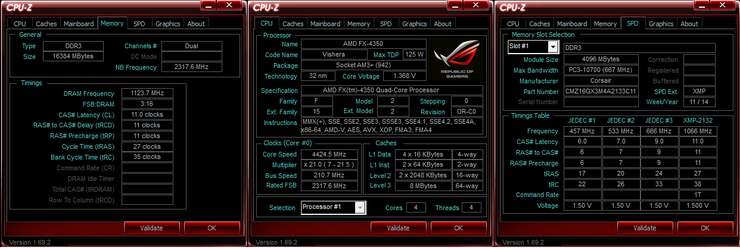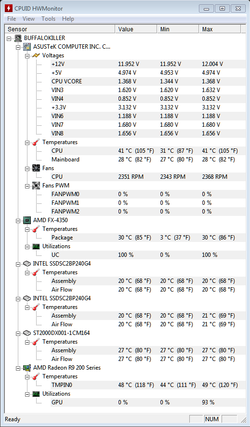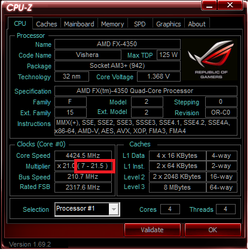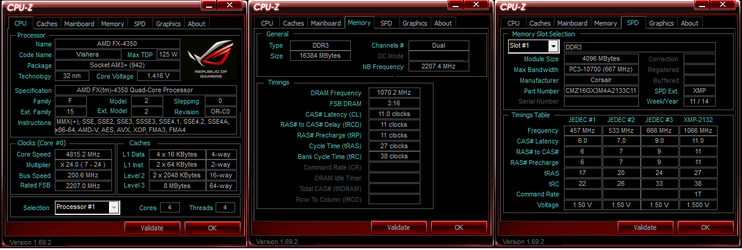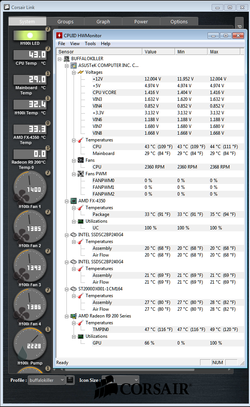I didn't know there was a 'right way' to OC, seeing how the entire purpose is to push your components above what they were designed for, OC'ing in its nature is dangerous, there might be a safer way, but I would say I'm not hurting anything by testing the boundaries here or there.
Overclocking is not, by definition, a dangerous thing to do. If you respect the reasonable "safe" voltage limits of your parts, keep temperatures reasonable, and use the right parts (in this case, the right motherboard), the overclock will not be dangerous at all. Sure, it'll degrade your CPU faster than running it stock will. One day, 4 years from now, your 4.5Ghz OC may suddenly not want to hold stable in Windows, and you may need to bump up Vcore or bump down multiplier. That's how these things work. Take it outside it's envelope, it degrades. I've lost 1X multiplier on my 2600K from 48X to 47X since May 2011. It degraded. Doesn't mean it's going to die any time soon, and I probably have another 4 years before it noticeably degrades further, by which time it will have been sold to somebody else who has use for such old things.
There definitely is a "right way to OC", and that is to isolate each "overclocking factor" be that the vcore, or the multiplier, or the ram clock, or the ram voltage, or load line calibration, or whatever, and tweak it on its own. This means leaving everything else at known safe stable settings while you tweak each new part. Now, some things, like the aforementioned load line calibration, come in series, after other steps. For example, with LLC on an Intel platform, what it would be doing is preventing voltage drop from what I punched into the bios. Without LLC, my 1.35V in bios could become 1.33V in Windows. LLC can even that out. You would apply LLC after setting your voltage and multiplier, and finding that your voltage was dropping. You wouldn't just go into bios with a stock CPU and turn LLC up. THat would be silly. That's why it is important to understand each factor and setting going into this, and know when to implement what and how it will play with everything else. Believe it or not, the best way to do this truly is by messing with 1 thing at a time.
I'll give you an example:
I recently overclocked a Pentium G 3258 for my HTPC. It was a bum chip (I lost the silicon lottery big time) and was able to get a miserable 4.4Ghz at 1.439V. Given that 1.45V is the max any sane person would push through this chip, I was unable to go for 4.5Ghz because I was already at the "safe voltage wall/limit".
What I did was first try a few mild overclocks- 4Ghz, 4.2Ghz, and first try them with auto voltage to ballpark what the CPU was going to need, then fine tune the voltage while leaving everything else alone to get the OC stable. Once I was stable, I upped the multi to 44 and screwed around with the voltage again, figured out what I was going to need to get it stable at 44, added some LLC to equalize what I was putting into the bios with what I was seeing in Windows, and I was done. Just ran P95 blend for 4 hours and it passed so I consider it stable.
That's another thing-- stable for WHAT? If you're going to be doing pinned-to-the-wall work on the CPU 24/7, an overclock that only tested p95 stable for 3 hours may not prove stable for that work. Even if you're going to be doing CPU intensive gaming for long periods of time, that OC may not prove stable. In my case all this computer is doing is streaming video from Netflix, Youtube, etc, downloading torrents, using VLC media player, surfing the web, etc. Simple stupid stuff. Stuff that doesn't push the hardware.
If you want to know what something means like "HT" on your platform, look it up. Watch a video. You don't need to screw with it to know what it is. I understand how planes stay in the air but I've never flown one, and I'd like to think that if I did fly one, I'd crash it... despite thousands of hours in FSX.
Seriously. Do it the way everybody else does it, or you'll never get truly stable, you'll give yourself headaches... you might even brick a bios chip (thankfully your board has 2 and they are replaceable)...
ONE thing at a time. Get it rock solid, move on.
This video may be helpful.
EDIT: Nope he's just screwing around without knowing anything. Try this one.
You should look up (it'll be in forums here) the TJMax and max safe 24/7 vcore for your CPU as well.
Was any of that helpful or relevant? Possibly not, as I had a colonoscopy and was sedated with propofol 8 hours ago and am still flying a little bit... I don't know if you even HAVE LLC on AM3+ as I'm an Intel guy. I only build AMD for "other people" like my mom and I tend not to tinker with them too much as I build low end AMD boxes. I don't mess with the high end AMD stuff. I disagree with the way they've implemented their cpu design, the power draw, the PCIE implementation, etc etc. I just don't mess with it. So take my posts with a grain of salt. The one thing you can take from my long, rambly posts that is 100% true across any platform and any CPU maker is that you tweak things 1 at a time.
The book you've just read is available for your Kobo reader or as an audiobook


